Description
Whilst 18mm Birch Ply is recommended for the cabinets, you can choose MDF to reduce the cost. The panels are CNC cut and have mitred joints to make the building process as simple as possible. Take a look over at our instruction page for this design to see how simple this full range speaker is to put it together. The cabinets are fully braced internally, which results in a really inert cabinet and as good a quality construction as can be found in very high end speakers.
If you want to build from uncut sheets of Birch Ply or MDF, you can download an outline plan here or on the Frugal-phile website.
These speakers got a glowing review over on HiFi Pig, reviewed by father and son team Rob and Dave Stevenson, here are a few quotes to whet your appetite.
‘Dramatic transient speed in macro dynamics and micro dynamics, imaging and cohesiveness in the sound of instruments that is obvious with reproduction of acoustic kit and vocals.’
‘Their musical character is clean and clear with intense detailed layering and impressive dynamics’
‘coherent and seamless – meaning the individual instruments & vocals sort of hang nicely defined as fully formed separate items and make up a stage set which can extend further in all directions, up, back, left and right, out from the boxes.’
‘These beauties deliver a good spread of complex orchestral works .They have the accurate tonality required, and detailed presentation to illuminate the music’s construction and emotion’.
‘Berlioz ‘March to the Scaffold‘ and ‘Witches Sabbath’ in his Symphony Fantastique is punched out with full macabre venom’
The full review of the HiFi Pig ‘Highly recommended’ speakers can be read here and is well worth a read.
Here are a few words from Dr. Scott Lindgren about the Pensil designs:
The MLTL is a variation on the vented box theme, but has a number of differences from a regular bass reflex type. The majority of bass reflex / ducted vent enclosures are derived based on Helmholtz (cavity) resonance theory, which assumes a uniform internal air-particle density, and no Eigenmodes (standing waves) present. For enclosures where the overall dimensions are relatively close to each other, this serves quite well, once the enclosure is appropriately damped. However, the assumptions begin to fail when one dimension is stretched relative to the others. In such cases, the standing waves begin to affect the behaviour of the enclosure and its output. Therefore, a quality enclosure design will account for these when developed, either attenuating, or, as is the case with MLTLs, actively using the standing waves as part of the enclosure alignment / tuning, rather than pure Helmholtz behaviour. There is no penalty for doing so (one is not ‘faster’ or ‘slower’ than the other for e.g.), and a number of advantages can be obtained.
In the case of the Pensils, the enclosure has a large volume compared to a normal vented box, and the longitudinal standing wave is factored into the enclosure alignment. Without damping, the result is a large excess of enclosure gain over a relatively broad tuning compared to a typical vented box. The enclosure is then stuffed, to typical transmission-line levels, with damping material. This provides a much-flattened impedance load similar to a pure transmission line, but with relatively broad-band gain. (Note: technically, if the electrical TL analogy is to be applied narrowly, a TL would be an enclosure designed to provide the flattest possible impedance load, with no other considerations at all. The term is rarely applied so narrowly: even Bailey’s original article on the subject used the terms ‘Transmission Line’ and ‘non-resonant’ in its title, and then proceeded in the main text to describe an enclosure that was, in fact, resonant). The Mark Audio drive units have a small amount of low-frequency gain built into their responses. Under typical room conditions, this matches well to the enclosure output, and avoids the need for shelving filters. The cabinets are designed to have a removable back: the owner can then trim the quantity of the stuffing material to suit their own room acoustics and personal preferences, without needing to make physical changes to the enclosure itself.
In any enclosure that uses standing waves as part of the alignment, the position of the driver (location of excitation) affects the behaviour, most significantly the activation of harmonic modes that occur in an un-tapered line at odd multiples of the fundamental. End loading (placing the driver at the ‘closed’ end of the line) will ensure maximum excitation of the fundamental, and all the harmonic modes. By adjusting the tap location (where the driver is positioned along the axial length of the line), it is possible to reduce the excitation of these unwanted harmonic modes (which are further attenuated by the stuffing within the enclosure. Note that while it is often claimed that stuffing reduces the speed of sound in a transmission line, in fact, as proved by Augspurger, King et al, this reduction is in fact quite small). Adjusting the position of the vent can also have an effect on output; in the case of the Pensils, it is deliberately located at the end, partly because they were intended to be as physically simple as possible, but also because the driver position and relatively high stuffing density are sufficient to reduce the effects of the unwanted harmonic modes without needing any offset to the vent position.
Please note that:

Wood glue is not included with this kit, but is available here. If your order is not going to be delivered to an address in the UK, you should not order wood glue from us as it may cause the package to be held by Customs in your country. Instead, you should purchase it locally.
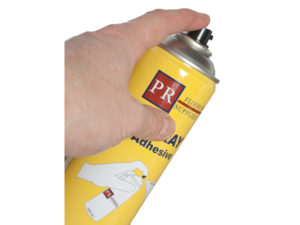
Contact Spray adhesive is not included with this kit, but is available here. If your order is not going to be delivered to an address in the UK, you should not order contact spray adhesive from us as it may cause the package to be held by Customs in your country. Instead, you should purchase it locally.

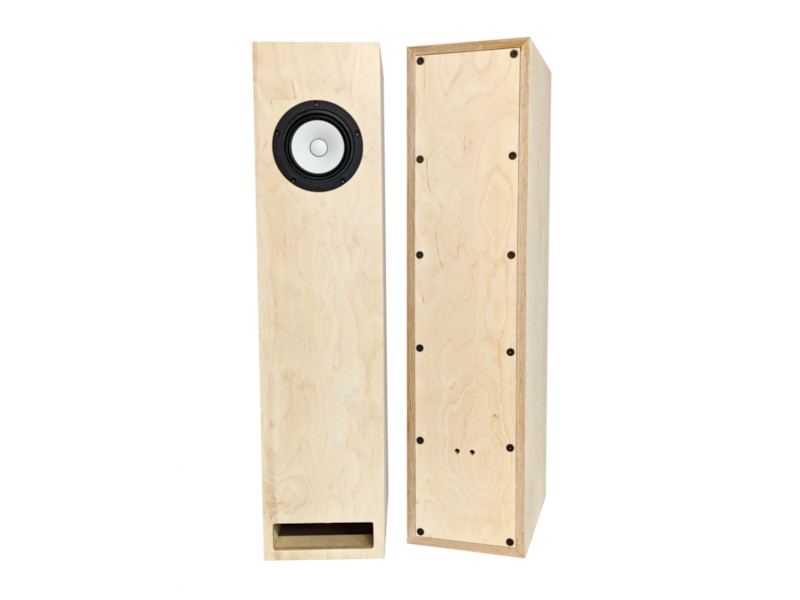

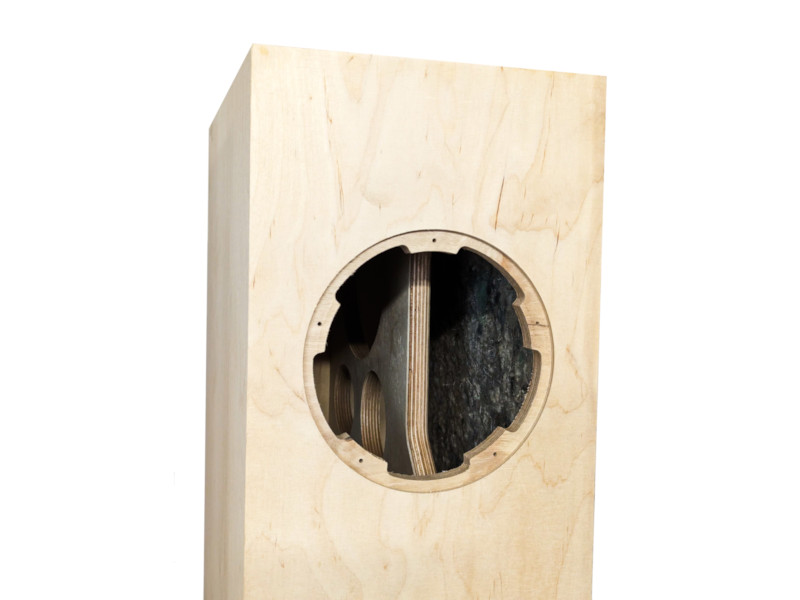
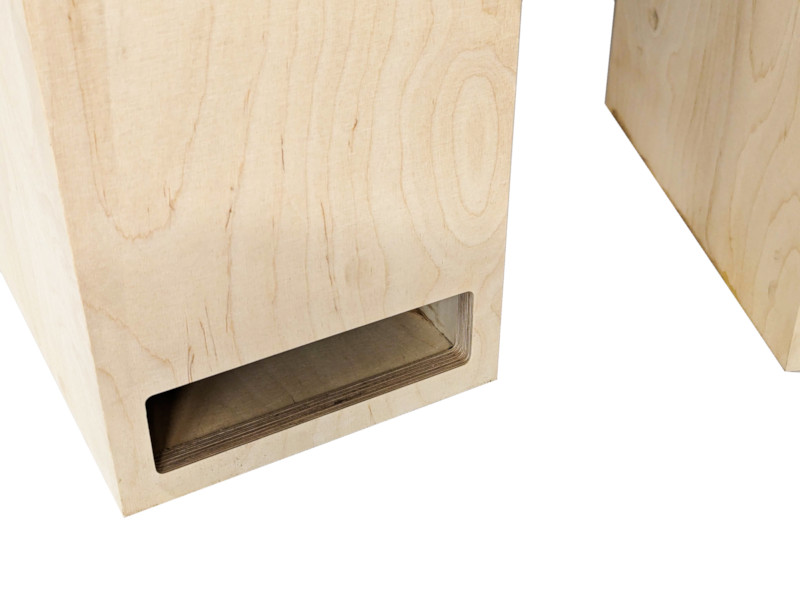

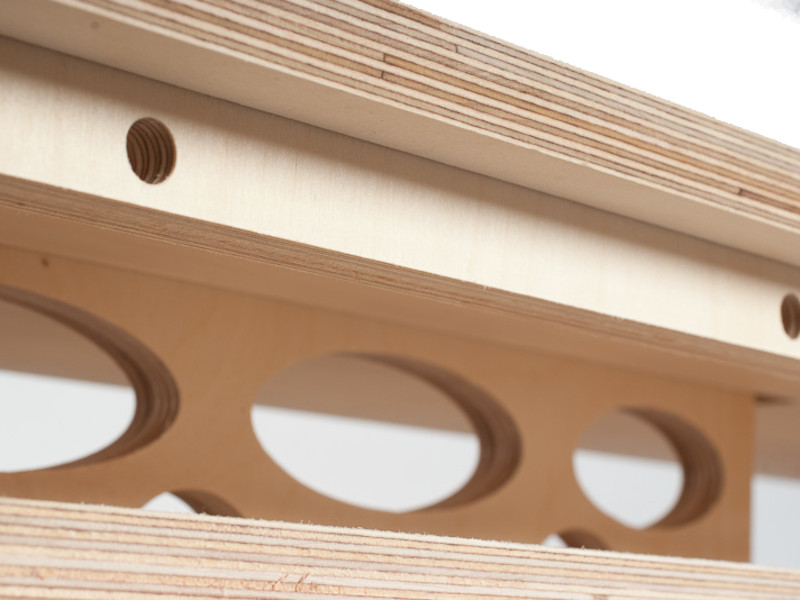
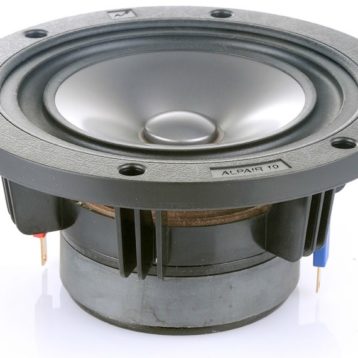
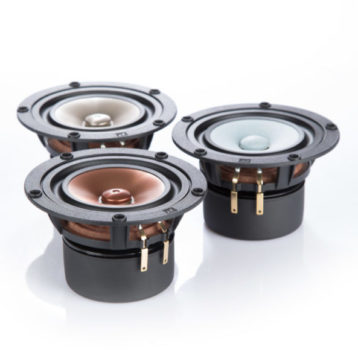
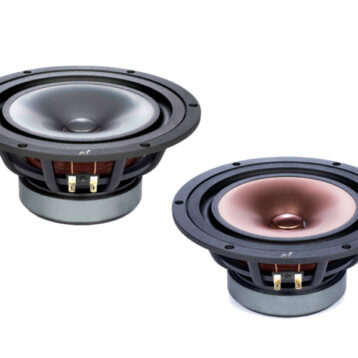
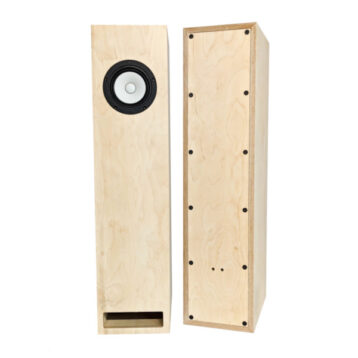
stefan whatcott –
We recently had a great review in HiFi Pig and got a ‘Highly Recommended’ award for this Pensil 11 speaker kit, you can read their full review over at https://hifipig.com/pensil-cabinet-kit-with-pluvia-eleven-drivers/
Tim Woodward (verified owner) –
Well I think it’s about time I submitted this review, having received the kit back in May 2017 after seeing you guys at the Bristol Show and ordering soon after! In my defence I didn’t start building the speakers till December, partly because I thought it was going to be a big job and also because I wanted to find the time to tackle it properly.
The Build:
As a complete newcomer to this (and many decades since I tackled any DIY project at all – I had to go buy all the clamps and tools!) the build was actually considerably easier than I imagined and there isn’t really much to say about it, although I will offer a few tips here for those brand new to this like me.
Stefan advices a dummy run through without glue, and I second that, make that three dummy runs for me! The last one even with the glue bottle in my hand pretending to glue so I knew exactly how much time I would actually have! The final proper glueing run was a doddle and was all finished in no time. Secondly I would take longer on smoothing down the plywood edges, and be far more careful about positioning the top plate so it is flush with the side panels at that point in the build. This birch ply has a beautiful finish, and had I known how well it would take to my polishing process (gleaned from DIYAUDIO forum) I would have been far more careful.
I used a scraper (not sandpaper which just keeps raising the nap) to finish the panels, and as the top ply layer is already a finish in itself this only took a few goes with this amazing tool, just removing the finest of sawdust layer whilst burnishing the wood laying down any remaining nap. Four coats of well rubbed in finishing wax (this ply is very thirsty and drinks it!) and the results I must say are far better than I expected. The wax says leave for 30 minutes between applying and buffing up, but longer is better and it still continues drying out after 24 hours or more.
When it comes time to insert your drive units don’t even attempt this before you have ether drilled the retaining holes all the way through or at least reamed the indents provided out a bit with a thin screwdriver to make screwing the bolts in easier. I made the mistake of simply popping in the drivers and trying to screw them down, bad move. The ply is as hard as nails and exerting the force required to get the bolts home properly whilst trying to avoid slipping and taking out a driver cone in the process is massively nerve racking.
Also, Mark Audio needs to either toughen up the ABS surround for these drivers or minimise the depth of the rubber seal provided (as Stefan has advised) because I easily distorted the driver surround by over tightening the bolts. I don’t think this would have happened if I had drilled the holes for the bolts first, as I would have been able to feel the tightness and stopped just as they were nipped into place. No lasting problems though, the performance isn’t effected and slacking off the bolts has returned the frame to virtually it’s original shape.
The Warm up:
Slowly, slowly, not listening at all is my advice, you are warming up the drivers so you don’t want to educate your brain in how they sound until you are ready – the brain is great at this and in my opinion most burn-in effect is actually brain/ear interface acclimatisation. It seems to be recommended for Mark Audio drivers that the first 20 hours or so is bare audible and acoustic material only, gradually increasing volume each day for say 100 hours or so. I then introduced more dynamic material and left them playing to themselves at slightly less than normal listening levels for another week or so. I have a spare room so this wasn’t a problem.
Whilst this was happening I couldn’t but be astonished at the clarity even as I tried not to get drawn in to listening proper – astonishing I think I said to Stefan!
The Stuffing:
I have spent literally weeks tuning this, driving myself nuts and spending days on forums looking for advice. The best advice seems to be ’stuff to taste’ which as a scientific fellow didn’t really appeal to me. So after a long email from Stefan I had a good idea of the ideal ‘Q’ (whatever the hell that means!) amount and where to put it. I eventually filled the middle region of the cabinet in all its sections with around 400g (there’s tons of bracing to rip your skin on – my hands were shredded!) I tried to keep the stuffing of an even density and not clumped up anywhere, it’s well away from the bottom port and slightly built up at the rear of the cabinet behind but a long way from the driver.
I also damped the side cheeks with felt as the sound was still a bit ragged. Plus I damped the rear panel opposite the back of the drivers as it seemed logical – not sure this had any effect at all but the contact adhesive informs me the felt is there for good now unless I want to scrape it off with a Stanley knife!
I over stuffed first, and the sound went flat and lifeless, so this part of the build is crucial and takes time believe me. I wish I had a measurement device and the skills to understand what it was telling me, but I just have to trust these old audiophile ears. I am sure I will take some stuffing out later, once I have acclimatised myself and maybe when I have more room for them in my new home – but that’s a little way off yet.
The Sound:
This is the bit I’ve been looking forward to, after a few weeks of tweaking and stuffing and tweaking and stuffing I think I’ve got to about the optimum level playing field in which to see just what these speakers can do.
“Wow what prodigious bass” is still the first impression, but that might be because I’ve been used to various incarnations of AVI’s ADM (Active Digital Monitors) speakers for a decade or more now. These are fast active stand mount studio type monitors with tight, tight bass, and even though I had them supplemented with a subwoofer, that still obviously left a mid-bass gap just where the Pensils have plenty to offer!
Of course this is very room and position dependent, and now they are up against the wall and firing across the room, where the ADMs once stood, this surprisingly seems to have tamed the bass considerably. I’m gradually getting used to the fuller and heavier sound – and on acoustic instruments like double bass or cello I can vouch this is beautifully accurate so no complaints here. It does make you wonder what speakers some electronic tracks are mastered on though, tic tac sounds the producer obviously thought would enhance things appear randomly and overly prominent and when sub-bass just seems to appear from nowhere and then go away again for no seeming reason one wonders if these studios have proper revealing speakers or headphones to listen on?
The first thing you notice on familiar tracks is the detail that these speakers pull out of the mix is astonishing, and on well recorded material the voices especially are truly real and tangible. Like the Hi-Fi Pig review states, micro detail is everywhere apparent and digs information out of recordings you thought you knew well. Timing and rhythm is excellent and foot tapping occurs on a regular basis. I get the impression, after about 6 weeks of occasional listening a couple of hours a night, that the cones do seem to over emphasis metallic sounds (snicks and snacks in the mix do seem over prominent as mentioned above) – the reverse side of this is that acoustic recordings sound amazing and when Ben Webster appears, obviously walking in towards the mic from the rear of the room, well – it’s hairs standing up on the back of the neck time!
There’s no denying that after just over a month of casual listening these are bright speakers, not nasty, but unforgiving. I can turn up the volume right to where vocals should begin to ‘shout’ and they don’t, they stay perfectly clear, but accompanying rim shots and cymbals etc become overly dominant and drown the mix. I hear on the forum that Mark Audio drivers do just keep improving, so I’m hoping that is the case and they smooth out a little. I did worry initially that I would end up down that narrow audiophile tunnel where only a few selected well recorded albums pass muster enough to listen to – but that isn’t the case. I’ve just had an evening with Frank Zappa and the Mothers listening to their Roxy Sessions just released… loud, crazy, real, dynamic, right there in the room. If you turn it up at the beginning to listen to Frank talking then forget to turn it down for the music – wow – truly live, in the room, at volume 11!!
I tend to listen to an eclectic mix, so these speakers will never be used just to listen to a small selection of audiophile quality recordings – and I can vouch that Tom Waits, PJ Harvey, This Is the Kit, Fink (oh Fink, that voice and guitar on Perfect Darkness turned way up!!!) all sound utterly amazing and fair just as well as the darling of audio shows Diana Krall! In fact I was going through the Verve and Impulse catalogues on Qobuz the other night and got to bed in the wee small hours, I just couldn’t switch off. Billie Holiday was truly in the room with me, I could hear Sonny Stitt slow pace and reduce volume just a tad before a big blow just knocked me out with its realism – and said Diana Krall’s piano went deep, deep, deep with her breathy voice exotically intoxicating. Remarkable, honestly, remarkable. If I could have built these speakers a few years ago I would never have got rid of £12k worth of Meridian 500 series kit that never did sound as good as I knew it could – because I simply couldn’t afford the £5k upwards the hi-fi shop wanted for the speakers to match!
However, it seems after years of no speaker cables, no DAC, no interconnects (except a Toslink to connect my AVI’s to my Auralic Aries Mini) I am well and truly back into the ‘hobby’ of hi-fi upgrades again! I would say, even if they mellow with age, these speakers are what’s known in the trade as ‘revealing’. Be warned, ancillary equipment needs to be of sufficient calibre otherwise it will be found wanting. I wouldn’t treat these like a £600 set of speakers, you could quadruple that price and still not be disappointed – if they were made in 15 year aged French oak of course!
I quickly discovered my trusty Chord Mojo DAC (usually on headphone duty) gives a cleaner, fluid, less grainy edge to high frequencies compared to using the Auralic’s built-in DAC (which sounds exceptional for a built-in offering). Plus the 4mm Van Damme speaker cable I initially purchased is both heavy and restrictive compared to the old single core DNM Reson cable I had laying around from years back. The Reson is light footed and clear as a bell in comparison, and very believable across the entire frequency range, I’ll probable wire inside with it as well when I take the backs off next.
If I am to believe what these excellent drivers are telling me, and I am starting to trust what they say, then there is plenty of room for improvement as time goes on. For a start I have no idea how my amp fits into the scheme of things for example, it was a lucky buy off ebay from a guy in Vienna and it certainly looks the part and reviews well. But who knows what a nice Single End Triode valve jobbie would sound like through these speakers? They are certainly very efficient, I can’t get the Heed up above 9 o’clock on the volume control even after turning down the Chord to 1v output!
I did in fact buy this full range single driver kit to recapture just that feeling of an analogue era long gone. It was after hearing Ben Webster coming through the beautiful Mark Audio driven Pearl Acoustics Sibelius speakers. They were being fed from a Revox reel to reel tape deck into a glowing valve amp at the Bristol show last year. Ok the Pensil 11 kit isn’t quite up to that level, nor should it be at the price. But apart from custom matched MA drivers, 15 year aged French oak build and the months of tweaking it took Pearl Acoustics to perfect the sound (I bet that was the stuffing!) I feel I am closer than I ought to be considering the difference in value.
The Pluvia’s are perhaps a more modern sounding driver, perhaps a little less analogue and forgiving – but I am still astonished at the sound I am hearing – and how much I saved over a shop bought alternative by building them myself. I can’t recommend this kit highly enough, but be warned, it is the start of a slippery slope, I am already thinking about my next build!
Tim Woodward
Qobuz Sublime Plus -> Auralic Aries Mini streamer -> Chord Mojo DAC -> Heed Obelisk SI V2 -> Woodward Audio’s custom built Finlandia Speakers (that’s what I’m calling ‘em!)
admin –
Blimmey Tim, that really was a long and well thought out review. I’m going to leave it in the review section for a while and see how it goes, I might move it to it’s very own page if I think it makes the page overly long or slow. Thanks so much for that it really helps other folk who are thinking of doing the same thing.
Stefan
Andrew inwood (verified owner) –
Well about 5 months ago I purchased a pair of pencil 11 full range speaker kit from Stefan, I have always wanted a pair of full range but worried that you don’t get much bottom end until I got these, WOW. The kit is easy to assemble. It took about 80 to 100 hrs to run in. You can tune them to your own taste it took me about a month. The bass that comes from these drivers is amazing, the sound stage is lovely, cymbals sound like cymbals. Awesome sound. well done kjf audio….and a big thanks to Stefan for your help and advice.
Drew
admin –
Hi Drew, it was a pleasure to meet you and your father when you came to KJF towers to pick up your dad’s kit, and then nice to speak to you again when you decided to buy your own. Hopefully there are more Inwood’s in the family who will make a purchase too 🙂
Dave Smithies (verified owner) –
Its quite a while since I bought the self build Pensil’s. It was a bit of a leap into the dark but I can now say I CAN SEE THE LIGHT. My previous speakers have been some small budget Kef’s, Heybrook HB1’s ( they were great ) Kef Q3’S, Quad 12l’s (fabulous finish ) and some M.A.D. Clapton style, home built monitors. Any how I have no regrets. The cabinets were an easy build, no real woodwork skills were required, only some weight training ( they are heavy) . To finsh them I used a yew stain and two or three coats of yacht
varnish. Fitting the drivers was simplicity its self. I was pleased with the results. Then I powered them up. Wow! The bass from them was much deeper than I had imagined was possible from such a small speaker, the mid and top range was super. The sound stage was much wider, and the music seemed so much more real. The only negative point for me were the inserts for spikes,which I found to be a little fragile. I hacked about some speaker stands to make some bases which seems to work. All in all I’m really pleased with the
Pencil’s. The equipment I use comprises of Garrard 301, Origin Live arm, various MM, Trichord Dino, Audion Sterling.